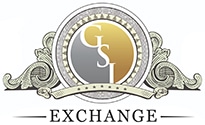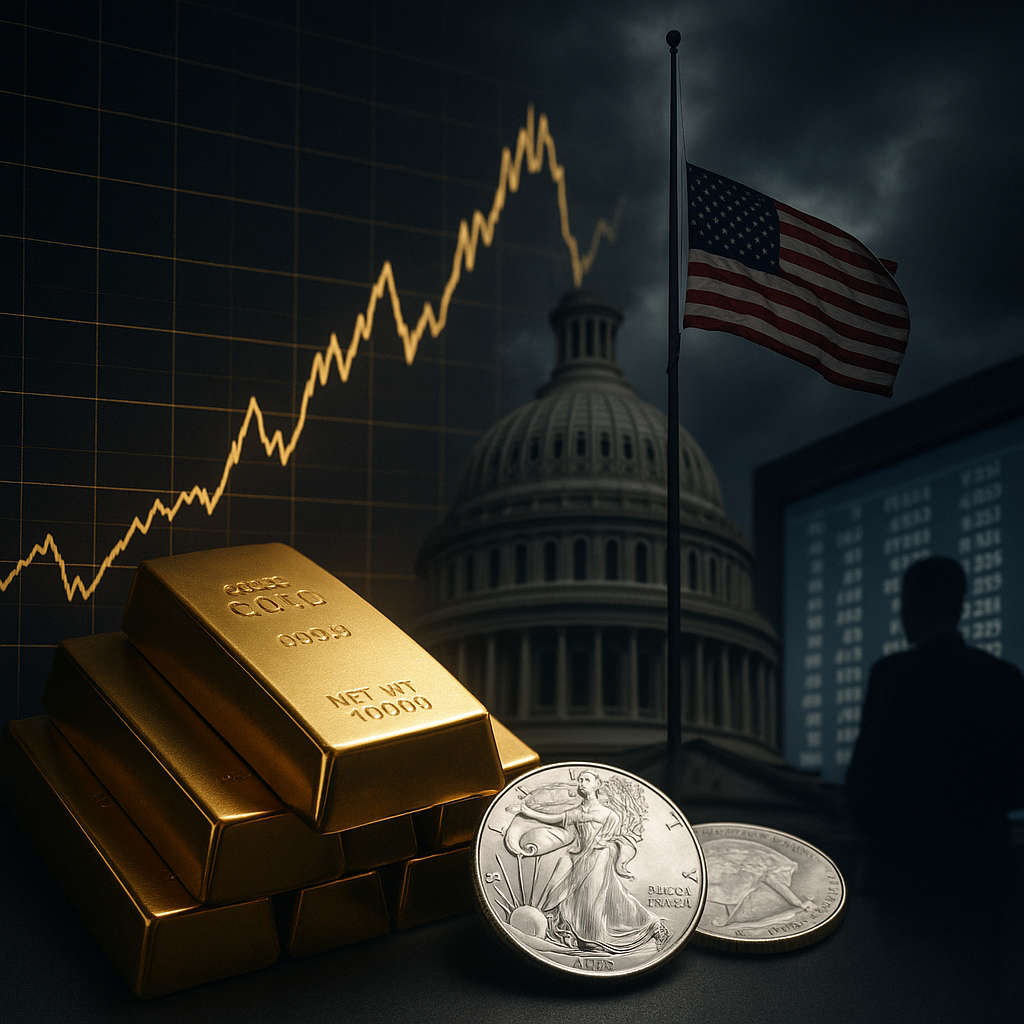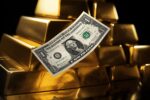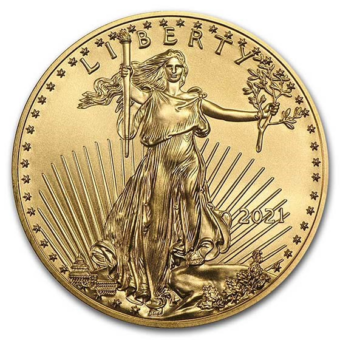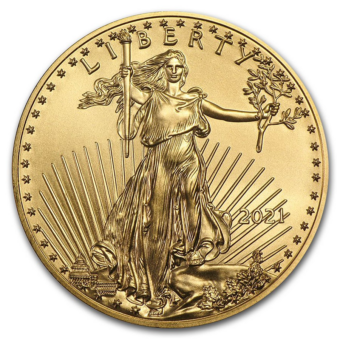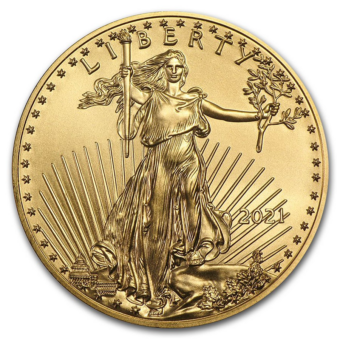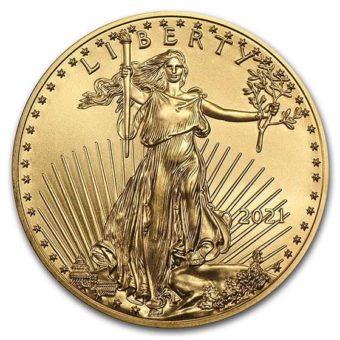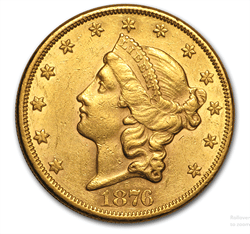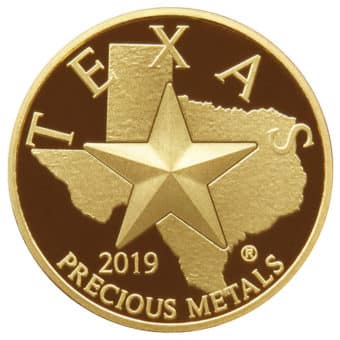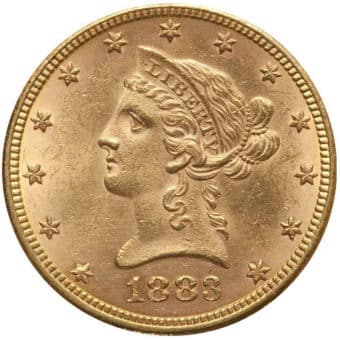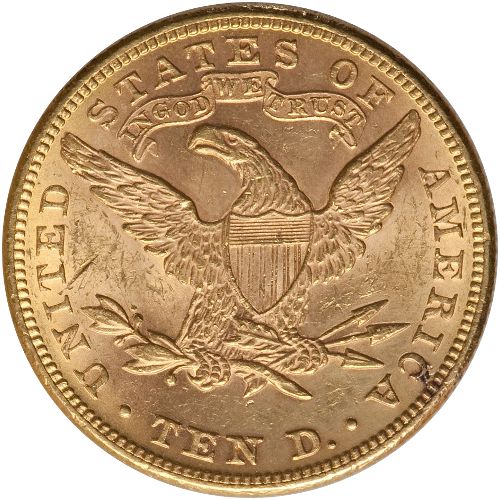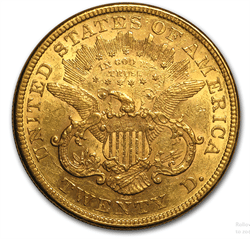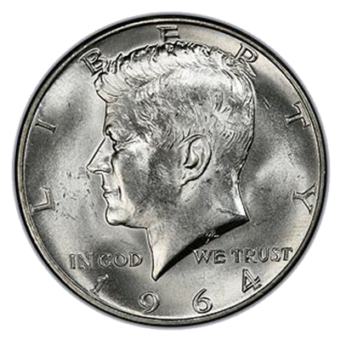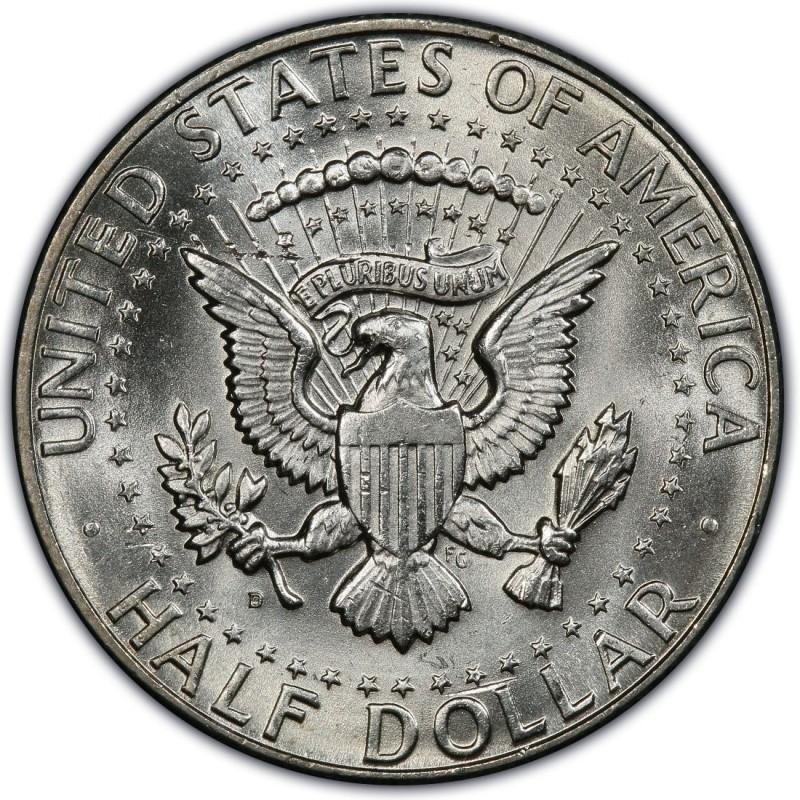Monday - 9.29.25: Gold and silver rallied sharply Monday, with December gold up $47.00 at $3,855.80, a new record high, and December silver up $0.434 at $47.09, its strongest level in 14 years. Safe-haven buying intensified as a potential mid-week U.S. government shutdown loomed, pressuring the U.S. dollar. Congressional leaders were set to meet President Trump over a short-term funding bill, but partisan divides on health-care subsidies and spending cuts left negotiations uncertain. The heightened risk of a shutdown, combined with threats of permanent dismissals for unfunded federal workers, added to market anxiety and supported further gains in gold and silver.
Tuesday - 9.30.25: Gold prices edged higher Tuesday, with December gold up $12.70 at $3,867.40, though gains faded by midday as traders weighed weak U.S. economic data against looming government shutdown risks. Silver saw profit-taking, with December silver down $0.481 at $46.53. U.S. consumer confidence dropped to a five-month low in September on job and growth concerns, while JOLTS data showed a modest rise in job openings. With Congress deadlocked and a federal shutdown imminent, political and economic uncertainty added safe-haven support for gold and silver markets despite silver’s pullback.
Wednesday - 10.01.25: Gold and silver surged in midday U.S. trading Wednesday, with gold up $21.50 at $3,894.40—its highest ever—and silver up $0.935 at $47.585, a 14-year peak. Safe-haven demand spiked as the U.S. government entered its first shutdown in nearly seven years, adding uncertainty to markets. A weaker-than-expected ADP jobs report further fueled dovish monetary policy expectations, boosting metals. Gold is now within easy reach of the $4,000 mark, up more than 48% year-to-date—the biggest annual gain since 1979—while silver approaches its 1980 record above $50.
Thursday - 10.02.25: Gold and silver dropped sharply in Thursday’s midday trading, mainly from profit taking after gold hit a record high and silver reached a 14-year peak earlier in the day. A stronger U.S. dollar and weaker crude oil prices also weighed on the metals. December gold was down $47.20 at $3,850.00, while December silver fell $1.674 to $46.015. The declines formed bearish “key reversals” on daily charts, hinting at possible market tops. Meanwhile, the U.S. government shutdown entered its second day, with the Trump administration freezing $18 billion in infrastructure funds and threatening mass federal layoffs. Economists warn the standoff could cost $400 million a day, dampen corporate confidence, and hurt investment—even as U.S. stocks touched record highs overnight.
Friday - 10.03.25: ChatGPT said:
Gold and silver prices climbed in early U.S. trading Friday, with December gold up $18.10 at $3,886.00 and silver jumping $1.081 to $47.445, near Thursday’s record highs, as safe-haven demand stays firm amid the third day of a U.S. government shutdown. With no progress in negotiations and President Trump threatening federal worker firings, the standoff looks set to drag on into next week. Meanwhile, global markets were mixed overnight, and U.S. stocks are poised to open slightly higher at record levels.
JPMorgan: Demand for gold and Bitcoin as a ‘debasement trade’
The big picture
JPMorgan analysts have put a label on something markets have felt for years: the rally in gold — and to a lesser degree Bitcoin — is the “debasement trade.” Investors, spooked by deficits, inflation, and geopolitical risk, are piling into hard assets as protection against the erosion of fiat money.
What’s happening
In a recent note, JPMorgan said retail investors are showing classic FOMO for alternative assets. The bank argued this demand reflects a mix of elevated geopolitical tensions, high government deficits, questions about Fed independence, and waning confidence in fiat currencies — especially in emerging markets.
Gold has pulled back from its highs near $3,900, but remains up more than 40% this year, while Bitcoin has surged past $120,000. Silver is also seeing strong momentum, rising more than 60% year-to-date despite struggling to stay above $48 an ounce.
Between the lines
The “debasement trade” isn’t new — central banks themselves have been quietly diversifying away from the U.S. dollar since 2022, after Washington weaponized the greenback against Russia. Global gold reserves have grown by 1,000 tonnes in three years, lifting bullion to its highest reserve levels in decades. This summer, gold even overtook the euro as the second-largest reserve asset.
Retail demand ramps up
While central banks have been leading the charge, retail investors are now catching up. In September, SPDR Gold Shares (GLD), the largest gold ETF, had a record month, with holdings jumping by 35.2 tonnes and one-day inflows of 18.9 tonnes — the biggest ever. Even so, ETF holdings remain below 2020 records, and speculative futures positioning is still under earlier peaks, leaving room for further upside.
By the numbers
- $3,847.30 — spot gold’s latest price, up more than 40% this year.
- $120,000+ — Bitcoin’s current price, up 28.6% year-to-date.
- $46.68 — spot silver’s latest price, up more than 60% this year.
- 1,000 tonnes — increase in global central bank gold reserves since 2022.
- 18.9 tonnes — record one-day inflow into GLD on September 19.
The bottom line
Despite huge gains, JPMorgan says the debasement trade may still be in its early innings. Central banks are committed, retail demand is accelerating, and as long as deficits stay high and trust in fiat money stays low, gold and Bitcoin may keep riding the same wave.
Fed president warns inflation is 'going the wrong way' as tariff concerns mount
The big picture
Chicago Fed President Austan Goolsbee says inflation is no longer easing — it’s ticking higher again. That reversal raises the risk of stagflation, a scenario where both inflation and unemployment worsen at the same time, leaving the Fed with no easy choices.
What’s happening
Speaking at the Midwest Agriculture Conference, Goolsbee said he had believed inflation was steadily heading back toward the Fed’s 2% target. But after several months of increases, he now admits, “it’s going the wrong way.” He warned that if inflation proves persistent, as it did in 2021–22, it would create a “really difficult scenario” for the Fed and any central bank.
Why it matters
The Fed is bound by law to pursue a dual mandate of maximum employment and stable prices. Normally one improves as the other deteriorates. But if both inflation and the labor market worsen together, Goolsbee noted, “now it’s not obvious what you do.” That dilemma is already looming after the Fed cut rates in September to shore up a cooling labor market.
Between the lines
Fed Chair Jerome Powell has said policymakers will focus on whichever mandate goal is furthest from target. But that framework still leaves no “risk-free path.” Cutting rates could stimulate growth but fuel inflation, while raising rates could slow inflation but weaken jobs further.
Tariff troubles
Goolsbee pointed to tariffs as a key uncertainty. He described his “11% lane” framework, noting that imported goods equaled about 11% of U.S. GDP in 2024. If tariffs remain confined to those goods, he said, their impact may be modest. But if tariffs spread to intermediate goods — components used in U.S. manufacturing — production costs rise, magnifying inflation pressures.
Services inflation adds to his concern. Tariffs can’t easily explain why service prices are rising, Goolsbee noted, which suggests the latest inflation uptick may not be “one and done.”
By the numbers
- 4.5 years — length of time inflation has been above the Fed’s 2% target.
- 2% — the Fed’s official inflation goal.
- 11% — share of U.S. GDP tied to goods imports, Goolsbee’s “lane” for tariff impacts.
- September 2025 — the Fed’s first rate cut of the year.
The bottom line
Goolsbee hopes inflation’s latest rise is temporary. But if tariffs spill over into broader costs — and services inflation keeps climbing — the Fed could face the very stagflationary bind it most wants to avoid.
$100 Silver: Boom or Bust for the White Metal?
The big picture
Silver bulls are buzzing again, with forecasts of $100 an ounce making the rounds. It’s not the first time silver has flirted with big numbers — and it won’t be the last. In the late ’70s, silver neared $50 before collapsing. In 2011, it spiked from $18 to nearly $50 in under two years. Today, supply deficits, a skewed gold-silver ratio, and financial instability have analysts wondering: is $100 silver hype or history waiting to repeat?
Why $100 silver isn’t crazy
Silver’s fundamentals are pointing higher. Demand from solar panels, electric vehicles, AI hardware, and everyday tech continues to outpace mining supply, creating structural deficits as inventories dwindle. Meanwhile, the gold-silver ratio — historically around 15:1 — now sits closer to 80:1. If gold climbs toward $3,000, silver at $100 looks far from outrageous. Add in decades of paper market manipulation by banks, which could unravel if investors demand physical delivery, and you’ve got a recipe for a breakout. Layer on geopolitical shocks, inflation, and trade tensions, and silver often plays catch-up faster than gold once investors pile in.
What could trigger the run
The silver market doesn’t need a slow climb — it needs a spark. That spark could come from a tech giant like Tesla or Apple securing physical supply, a delivery failure on the COMEX, a deep recession that forces central banks back into money-printing mode, or simply a broad loss of faith in fiat currencies. History shows it doesn’t take decades — just the right panic at the right moment.
Why most people will miss it
The tragedy is that most retail investors tend to arrive late. They often wait until mainstream headlines trumpet silver at $75 before rushing in — precisely when supply is tight and premiums are steep. By the time your neighbor starts bragging about silver coins, the move is usually well underway.
By the numbers
- $50 — silver’s near-peak in 1980 and again in 2011.
- 80:1 — today’s gold-to-silver ratio, compared to the historic 15:1.
- 3–5 years — the timeline many bulls believe could see silver at $100.
The bottom line
$100 silver isn’t fantasy — it’s a real possibility. The real questions are timing and catalysts. If gold breaks $3,000 and silver starts closing the gap, $100 could look less like a ceiling and more like a stepping stone.
Fed Chief Powell Says Stock Prices Appear ‘Fairly Highly Valued’
The big picture
Markets are celebrating the Fed’s latest rate cut, but Powell’s warning that stocks are “fairly highly valued” casts a shadow.
- He downplayed systemic risks.
- But his remarks remind investors that easy money can inflate bubbles.
- Stocks slipped after his comments, even as indexes sit at record highs.
Driving the news
Speaking in Providence, Powell said the Fed looks at financial conditions broadly, including asset prices, to judge how policy is working.
- “By many measures, equity prices are fairly highly valued,” he noted.
- Investors had already bid markets up before and after the quarter-point cut.
- Powell admitted that markets “listen to us” — and price in expected Fed moves.
Between the lines
Powell walked a fine line:
- Yes: Valuations look stretched.
- But: Financial stability risks remain “low.”
- Translation: The Fed isn’t signaling imminent alarm, but it’s watching.
By the numbers
- 0.25 percentage point — size of the latest rate cut.
- Sept. 17, 2025 — date of the last FOMC meeting.
- Record highs — major indexes hit multiple peaks before Powell’s remarks.
Why it matters
Powell’s acknowledgment could sharpen the debate:
- Are Fed cuts fueling dangerous asset inflation?
- Or are strong valuations just a side effect of market optimism?
- For investors, it’s a reminder that what the Fed giveth, it could also taketh away.
The bottom line
Markets loved the cut. They didn’t love Powell’s reminder that valuations are lofty.
The Fed insists risks are contained — but the longer the rally runs, the more investors may question how sturdy it really is.
NEXT WEEK’S KEY EVENTS
Economic Calendar: October 6 – October 10, 2025 (ET)
Monday, Oct. 6
- None scheduled
Tuesday, Oct. 7
- 3:00 PM – Consumer Credit (Aug)
Wednesday, Oct. 8
- 2:00 PM – Minutes of Fed's September FOMC meeting
Thursday, Oct. 9
- 8:30 AM – Initial Jobless Claims (week ending Oct. 4)
Friday, Oct. 10
- 9:45 AM – Chicago Fed President Austan Goolsbee Opening Remarks
- 10:00 AM – Consumer Sentiment (Prelim, Oct)
IMPACT ON PRECIOUS METALS MARKETS
Consumer Credit (Tue)
Rising credit → consumer borrowing strength, risk-on tone, bearish for metals.
Falling credit → consumer caution, growth concerns, bullish for safe havens.
FOMC Minutes (Wed)
Hawkish tone → tighter policy expectations, bearish for gold/silver.
Dovish tone → easing bias or policy caution, bullish for metals.
Initial Jobless Claims (Thu)
Rising claims → labor market weakness, supportive for metals.
Falling claims → labor resilience, bearish for metals.
Chicago Fed Goolsbee Remarks (Fri)
Hawkish comments → higher-for-longer Fed view, bearish for metals.
Dovish comments → policy flexibility or easing hints, bullish for safe havens.
Consumer Sentiment (Fri)
High sentiment → stronger spending outlook, risk-on, bearish for metals.
Low sentiment → consumer caution, risk-off, bullish for metals.
